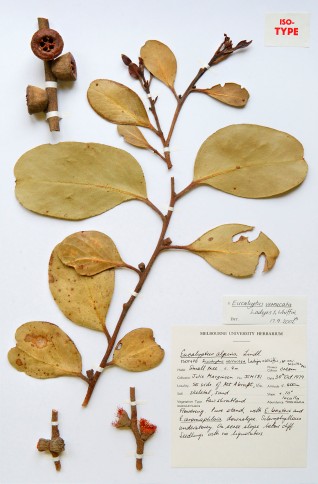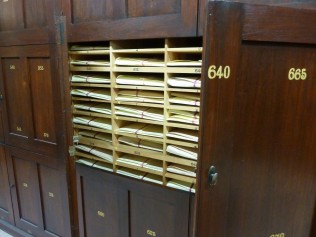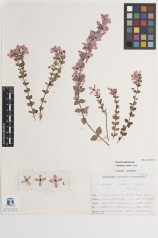The Atlas of Living Australia (ALA) recently welcomed a new data provider: the University of Melbourne Herbarium (MELU). Home to approximately 100,000 specimens, MELU is the largest university herbarium in Australia.

Although small in size compared to the state and territory herbaria, it is the largest and most botanically diverse university herbarium, and makes a valuable contribution to our combined knowledge of the Australian flora. All major botanical groups are housed in the collection, but it is particularly rich in algae and non-vascular plants.
About 10 per cent of the collection has been databased to date, adding over 9,000 records to the Atlas. More MELU specimen records will be added to the Atlas as the collection continues to be databased by a team of volunteers – who are mostly undergraduate students – and herbarium staff. Volunteering at the herbarium gives students great insights into botanical diversity as well as an understanding of how natural history collections are managed.
Although all herbaria are important research collections, university herbaria, in particular, have an important role in teaching the next generation of botanists. The herbarium is a valuable teaching resource, explains Herbarium Curator, Dr Gillian Brown. “Specimens are used in practical classes to demonstrate the diagnostic features of different plant groups and some subjects require students to prepare their own specimens, which in turn are incorporated into the collection.”
As well as being available in the broader Atlas, these specimens can be viewed in Australia’s Virtual Herbarium (AVH), a special ‘hub’ of the Atlas, which provides access to the combined holdings of Australia’s government and university herbaria. The ability to easily view the specimen-based herbarium collections in a single location provides a valuable research and collections management tool for botanical researchers and herbarium curators.

There are 16 herbaria in Australian universities, which together house over 420,000 specimens. MELU is only the second university herbarium to deliver data to the Atlas and AVH. The N.C.W. Beadle Herbarium (NE) at the University of New England has over 80,000 recordsin the Atlas.
